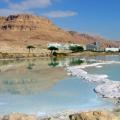It still remains a mystery how the pyramids were built in Egypt in those distant times. Neither the method of building the pyramids, nor who acted in the role of work force.
The pyramids located in Egypt attract a huge number of tourists to the country's resorts. Everyone wants to see the "seventh wonder of the world" with their own eyes. Without them, it is impossible to form an idea of Egypt as a country as a whole. In terms of popularity, a trip to the pyramids can be compared with diving in Egypt, for the sake of which lovers of the underwater world of the Red Sea travel to the Red Sea.
As a rule, the pyramids in Egypt are associated with the pyramids located in Giza - in a place not far from Cairo, but you should know that these are far from the only pyramids found in Egypt. It is in Giza that the three most famous pyramids of Egypt are located - the pyramids of Cheops, Khafre and Mikerin. Currently, there are about 118 pyramids in Egypt. Many of them have not retained their original appearance and open to the eyes of people in the form of hills or shapeless piles of stones.
In Egypt, pyramids of two types can be observed:
- stepped;
- the correct shape.
Stepped are the most ancient representatives of the pyramids in all of Egypt.
The first mention of the pyramids in Egypt was made in the 5th century BC thanks to the ancient Greek historian Herodotus. Traveling around the outskirts of Egypt and seeing the pyramids on the Giza plateau, Herodotus immediately called them "the seventh wonder of the world." Herodotus created the legend that the famous Great Sphinx, located not far from the pyramids of Giza, is the peacekeeper of the buried pharaohs.
The internal structure of the pyramids in Egypt
The pyramids in Egypt are one of the stages of the funeral - ritual process for the burial of the pharaohs. Construction of the pyramids in times Ancient egypt followed strict building rules:
- next to each pyramid, there were necessarily two temples - one very close, and the second a little lower, so that its foot was washed by the waters of the Nile;
- the pyramids and temples were connected by alleys.
Unfortunately, the pyramids of Giza have not preserved their temples to our time. There is only one temple left - the lower temple of Khafre, which was considered for a very long time the temple of the Great Sphinx. Inside every pyramid in Egypt, a chamber was created to store a sarcophagus with a mummy with carved passages to it. Some cells contained religious texts.
In the 20th century, scientists established that all pyramids in Egypt are structures with correct mathematical proportions.
They were built in several stages:
- alignment of the site for the construction of the pyramid (about 10 years);
- construction of the tomb (sometimes the tomb was enlarged in comparison with the original construction project).
There is still debate about how the stone blocks were brought to the very top of the pyramid.
What pyramids can be seen in Egypt
Pharaohs of the III dynasty
The most famous pyramids in Egypt, built during the reign of the Pharaohs of the III dynasty, are the pyramid of Haba and the pyramid of Djoser.
The pyramids of the pharaohs of the IV dynasty
Great pyramids in Egypt
Every evening, a light and music show is held near the pyramids, accompanied by stories about the history of the construction of the pyramids in different languages (including Russian).
The first pyramid, which gave rise to all Egyptian pyramid construction, is located in Saqqara, about 17 km south of Giza. It was built in 2667-2648 BC for Djoser, the first pharaoh of the third dynasty.
The history of the construction of the pyramid of Djoser
The invention of masonry is attributed to the beginning of the reign of Djoser. The pyramid of Djoser is considered the oldest stone structure on Earth, its prototype was the mastabs of the pharaohs of the first dynasty, built of adobe bricks. At first it was also a mastaba made of stone, but then it went through five stages in its development.
First, the architect of the pharaoh Imhotep erected a large mastaba, similar to the previously built tomb of Djoser in Upper Egypt. This time, the mastaba was not made of bricks, but of stone blocks. Subsequently, during the reign of the pharaoh, it was expanded in four directions, and then made oblong. The decision to expand the building for the fourth time led to the fact that a tomb appeared, unlike any previously erected. Imhotep built three more mastabas, placing them one above the other, each of them was smaller than the previous one. This is how the first step pyramid appeared, which became the prototype of all the Egyptian pyramids.
However, Djoser wanted to make the pyramid even larger, he ordered to increase its base, to make six terraces on its top. The pyramid was faced with limestone, which was brought from the opposite bank of the Nile, from the hills of Tura.
Design features
To create the stepped pyramid of Djoser, several independent layers of masonry were used, they rested on a central crushed stone base. In a similar way, all the pyramids that appeared in the future were built - Khafre, Khufu and other pharaohs who reigned later. However, unlike the later pyramids, here the stone blocks are tilted inward at an angle of 74 ° in order to give the structure more strength. In the pyramids built later, the masonry layers are arranged horizontally.
Djoser's tomb was located under the foundation, it was carved into the rocky ground, a square shaft led to it. The entrance to the mine was located far beyond the pyramid, to the north of it. A massive ten-meter wall was built around the pyramid, and inside it was an area on which several temples were erected and
Pharaoh Cheops ( Khufu) - the oldest and largest of the three great pyramids Egyptian Giza(southwestern suburb of Cairo). She is the oldest of seven wonders the ancient world and the only one that remained almost intact.
The fact that the pyramid was built specifically for the king of the fourth dynasty of the pharaohs Khufu is indicated by an inscription in one of the inner chambers. According to Egyptologists, the most likely time of its construction was 10-20 years, near 2560 BC. Its architect is considered to be Hemiun, the nephew and chief minister of Khufu. With its original height of 146.5 meters, the Cheops pyramid was the tallest building in the world for more than 3800 years.
Detailed study of the Cheops pyramid. Video
The pyramid was once lined with white limestone, which is harder than the main blocks. Its top was crowned with a huge gilded pyramidal stone. Some of the cladding stones can still be seen around its base. There are very different, sometimes sharply opposite theories about the methods of building a pyramid. The most convincing ones are based on the idea that huge stones were dragged to the construction site from the quarry, where they were lifted into place.
V " Great pyramid»Three hollow chamber chambers have been opened so far. The lowest of them is carved into the rock on which the pyramid was built, below its base. The construction of this chamber was not completed. The other two - the so-called "tomb of the queen" and the "tomb" of the king - are located higher, in the thickness of the pyramid itself, and not the "foundation".
The Cheops pyramid complex also included:
- two funeral temples of Khufu (one near the pyramid and one near the Nile);
- three smaller pyramids - for Khufu's wives;
- the remains of another one (for his mother?), Whose construction remained unfinished;
- the road from the upper memorial church to the lower one with a width of 18 meters, which in ancient times was lined with polished slabs and whose construction, according to Herodotus, was a work "almost as huge as the construction of the pyramid itself";
- several "docks" for "solar rooks". A cedar boat 36 meters long was found in one. She is the oldest surviving ship in the world.
- < Назад
- Forward>
Dear guests! If you liked our project, you can support it with a small amount of money through the form below. Your donation will allow us to transfer the site to a better server and attract one or two employees to more quickly post the mass of historical, philosophical and literary materials we have. It is better to make transfers through a card, and not with Yandex money.
Pyramids
Mysterious pyramids Egypt
The Egyptian pyramid of Djoser, better known as the step pyramid, is located in Sakkara, 30 km from Cairo. A visit to the pyramid is part of the Dashur-Sakkara excursion. It is worth visiting this pyramid at least out of curiosity, because this is the very first pyramid built in honor of the ruler Djoser. The peculiarity of the pyramid is that it is made in a stepped form. Six steps - the path along which the pharaoh leaves for afterworld as historians believe. Inside the pyramid there are 11 burial chambers for the pharaoh and his family members. During archaeological site Djoser himself was not found, only the mummies of his relatives. This is due to the fact that by the time the excavations began, the tomb had already been plundered in order.
An excursion to Sakkara with a visit to the Djoser pyramid will cost about $ 80 per person.
Pyramid of Mikerin
The pyramid is located on the Giza plateau next to other famous pyramids - Cheops and Khafre. Compared to them, the pyramid of Mikerin is considered the smallest and youngest pyramid of the famous triad. The peculiarity of this pyramid is in its color - up to the middle it was made of red granite, and above it was made of white limestone. But in the 16th century, the cladding was destroyed by the Mamluk warriors. The fact that the pyramid of Mikerin is relatively small in size, scientists explain by the fact that the Egyptians stopped making grandiose tombs. But despite this, the pyramid never ceases to amaze scientists and travelers. For example, the largest stone block weighs about 200 tons! What are technical means so helped the ancient Egyptians? An excursion to the pyramid is included in the travel program in Cairo, its cost is approximately $ 60 per person. 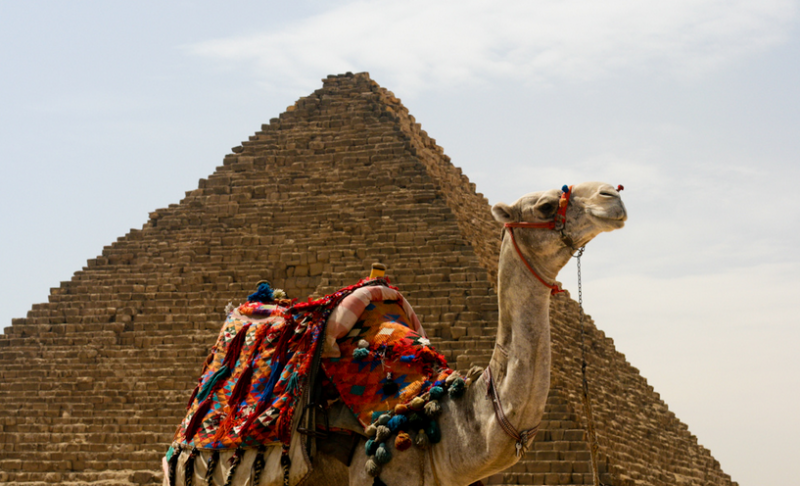
Pyramid of Mikerin
The Pyramid of Cheops
There is hardly a person. who would not know the main attraction of Egypt - the pyramid of Cheops. The height of this one of the Seven Wonders of the World today is 140 meters, and the area is about 5 hectares. The pyramid consists of 2.5 million stone blocks. The construction of the pyramid took 20 years. Several thousand years have passed since the construction of the Cheops pyramid, but the Egyptians still greatly honor the pyramid, and every year in August they celebrate the day of the beginning of its construction. Despite the fact that the research and excavation of the pyramid, it still holds many secrets. For example, in the burial room of the Pharaoh's wife, secret doors were found, which, according to scientists, symbolize the path to the afterlife. But the archaeologists could not open the last door. The cost of an excursion to the Giza plateau with a visit to the pyramids is 50-60 dollars. For children, the ticket will cost half the price.
Pyramid of Khafre
Although the pyramid of Khafre is 4 meters smaller than the pyramid of Cheops, visually it seems taller. The secret is that the pyramid stands on a ten-meter plateau and is very well preserved to this day. The pyramid has two entrances - one at a height of 15 m, and the other on the same side at the base level. Inside the pyramid of Khafre it is quite modest - two rooms and a couple of corridors, but here is a real sarcophagus of the pharaoh. The tomb is made on the highest level and does not leave indifferent any of the tourists. The tomb itself is empty.
Archaeologists found a grandiose find in a pyramid in the 19th century - a sculpture of a pharaoh from a mountain diorite.
The cost of an excursion to the Khafre pyramid is about $ 60. 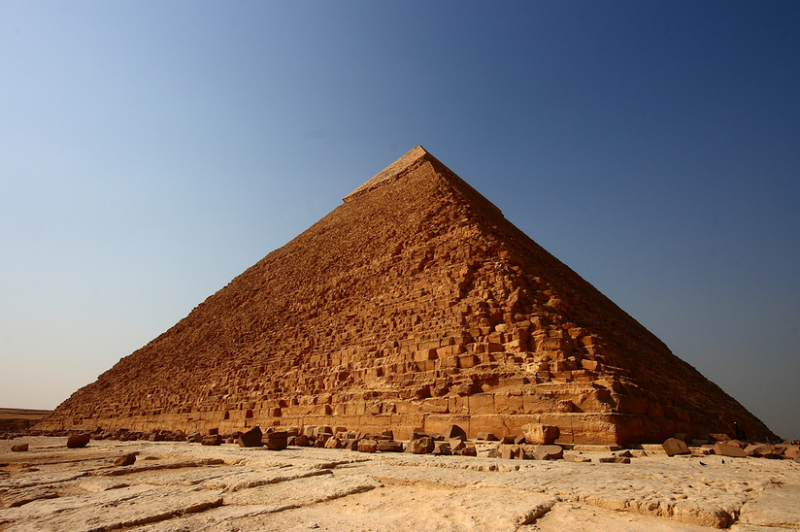
Pyramid of Khafre
Dashur
This place is not as popular as the Giza plateau with its pyramids. Dashur is famous for its pyramids, which were built during the reign of Pharaoh Snofu. These structures are considered to be the first tombs in history, built according to new types of structures.
The southern pyramid, which is better known as the Broken Line, got its name from its irregular shape. In the course of its construction, the angles of the edges were changed for some unknown reason. Perhaps this was a mistake, but scientists explain it as a construction move with concern for the strength and durability of the pyramid. The main difference between the Broken Pyramid is. that it has two entrances - the "traditional" northern and almost never encountered southern.
Another attraction of Dashur is the Northern Pyramid, better known by its name as the Red Pyramid. The pyramid got its name because of its facing red color. This is the first tomb of the correct pyramidal shape. It is very dark in the pyramid, so it is worth taking a flashlight with you. In the lowest burial chamber one can observe a high stepped ceiling, the same as in the gallery of the Cheops pyramid.
The cost of an excursion to Cairo, which includes a trip to Dashur, will cost an average of $ 85.
Perhaps every person wants to look at the pyramids. And if this is your dream since childhood, then a tour to Egypt is what you need. It is very easy to order such a tour today - it is enough to contact travel agencies of your city through a special form on our website, or contact with all your questions at 8-800-100-30-24.
Egyptian pyramids of the Pharaohs of the III dynastyWhen mentioning the Egyptian pyramids, as a rule, they mean the Great Pyramids, located at Giza, near Cairo. But they are not the only pyramids in Egypt.
Mastaba Shepseskaf in Sakkara
During the period of the first dynasties, special "houses after life" appeared - mastabs - burial buildings, which consisted of an underground burial chamber and a stone structure above the surface of the earth. The term itself refers already to the Arabian time and is connected with the fact that the shape of these tombs, similar in section to a trapezoid, reminded the Arabs of large benches called "mastaba".

The first pharaohs also built mastabs for themselves. The oldest royal mastabas, dating back to the time of the 1st dynasty, were built from adobas - unbaked bricks from clay and / or river silt. They were built in Nagadeya Abydos in Upper Egypt, as well as in Sakkara, where the main necropolis of Memphis, the capital of the rulers of the first dynasties, was located. In the above-ground part of these buildings there were chapels and rooms with burial implements, and in the underground - the actual burial chambers.
Haba pyramid
The pyramid is located in Zawiet el-Erian. Its architect is considered to be Haba - the penultimate pharaoh of the III dynasty. The Haba pyramid is larger than the Sehemkhet pyramid, and unlike the latter, it is slightly better preserved.
There are eleven monuments from the reign of Hub, on which his name Hora has been preserved.
1. Seal found by J. Quibell in an urban area ancient city Hierakonpolis. Containing an inscription - the name of Khor-KhaBa.
2. An inscription on a vessel made of alabaster, found by L. Borchardt in the burial temple of Pharaoh Sahur, also containing the name of Khor-KhaBa.
3. The seal found in eastern city on the island of Elephantine by V. Kaiser in 1987.
4-8 Bowls of marble, porphyry, and limestone found in Tomb Z 500 at Zawiet el-Arian by Dawes Dunham are now in the Museum of Fine Arts in Boston. They contain inscriptions - Khor - HaBa.
9. A bowl of diorite named Khor-HaBa, located at University College London, was acquired on June 26, 1922 at Sotheby's, from the McGregor collection. The origin is unknown.
10. A diorite bowl, in a private collection, also contains a carved and drilled Khor-HaBa inscription from a collection made in Egypt by Mr. Robinow in 1895-6. The collection catalog says that it was brought from Dakhshur.
11. The artifact, a seal located in London, at the University College, is presented by F. Petrie in his "History", the inscription contains the name "Khor-HaBa, Golden God, what he says will be done."
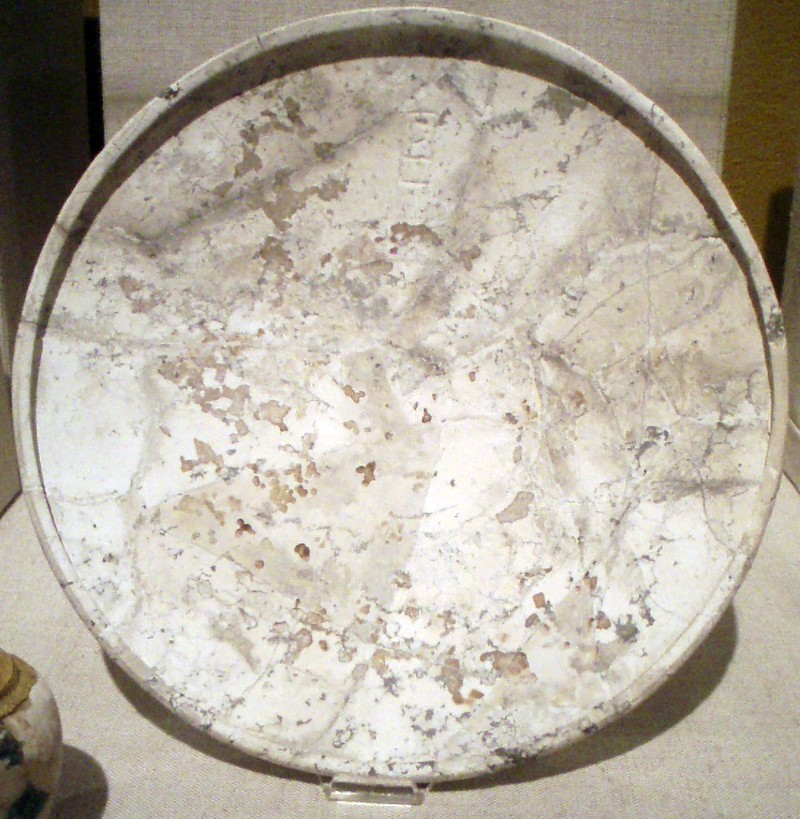
Dolomite Bowl from the Museum of Fine Arts, Boston, engraved with the Horo name of Haba
The Layered Pyramid ("The Round Pyramid", sometimes called the "Layered Pyramid") is a stepped pyramid located a few miles from Saqqara towards Giza, in Zawiet el-Erian. Today it is almost completely destroyed.
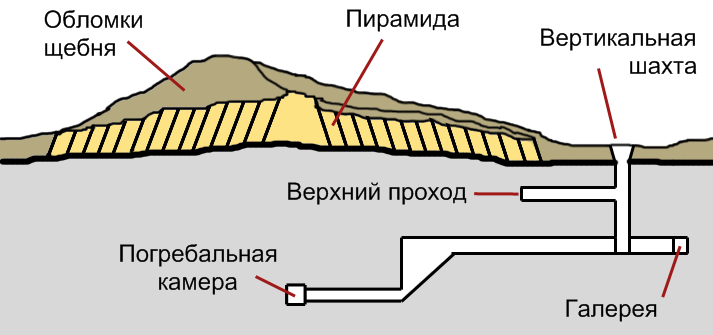
Its base is a pyramidal limestone hill with 14 rows or layers of masonry made of the same material. The pyramid covers an area of 10,000 m2 and is currently 17 m high. The burial room is carved into the rock under the pyramid. A staircase and a gallery leading to the north-east side lead to it. Outside the pyramid itself, from the northeast, north and northwest, a long corridor carved into the rocky ground with 32 cache-storerooms goes around it. Next to it there is an embankment and a deep well, apparently intended for another pyramid; however, it was never built.
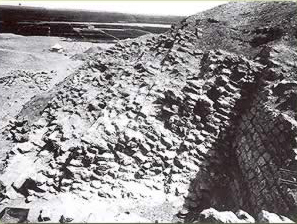
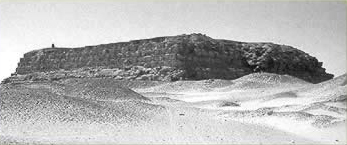
In the central part of the pyramid in Zawiet el-Erian, the structure of the masonry is clearly visible - the layers of stone are slightly inclined towards the center and, as it were, lean on it (because of this, it is sometimes also called "Layered"). The material of the building is roughly hewn small stone and clay mortar. The technology for building the pyramid in Zawiet el-Erian is similar to that used in the construction of the Sehemkhet pyramid and the Step pyramid in Saqqara.
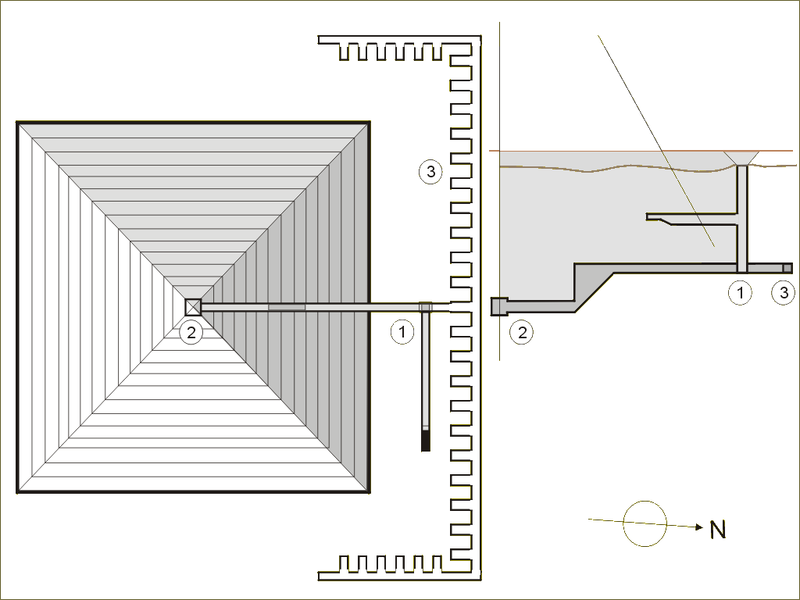
Inner corridors of the pyramid: 1) Stairs and descent to underground corridors 2) Corridor leading to the burial chamber 3) Complex of 32 corridors
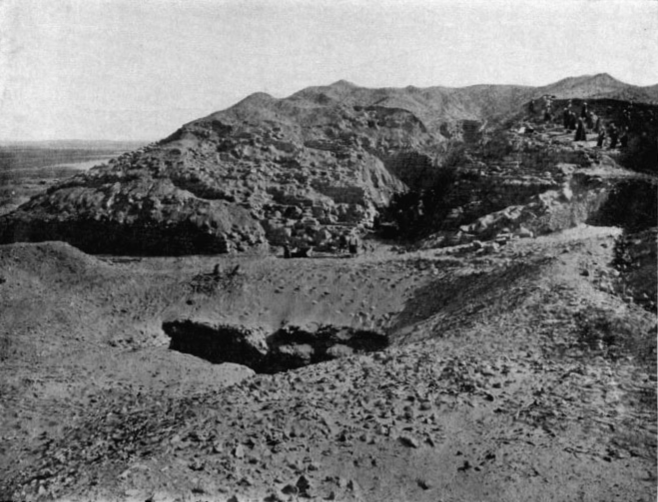
The first mentions of this pyramid date back to 1839, when it was discovered by John Shae Perring. A little later, K. Lepsius entered this pyramid into his list of pyramids under the number "14". In 1896 J. Morgan opened the entrance to the interior of the pyramid. In 1900 Alexandre Barsanti began to study this pyramid. It was also studied by George Andrew Reisner and Clarence Fisher.
Djoser's pyramid
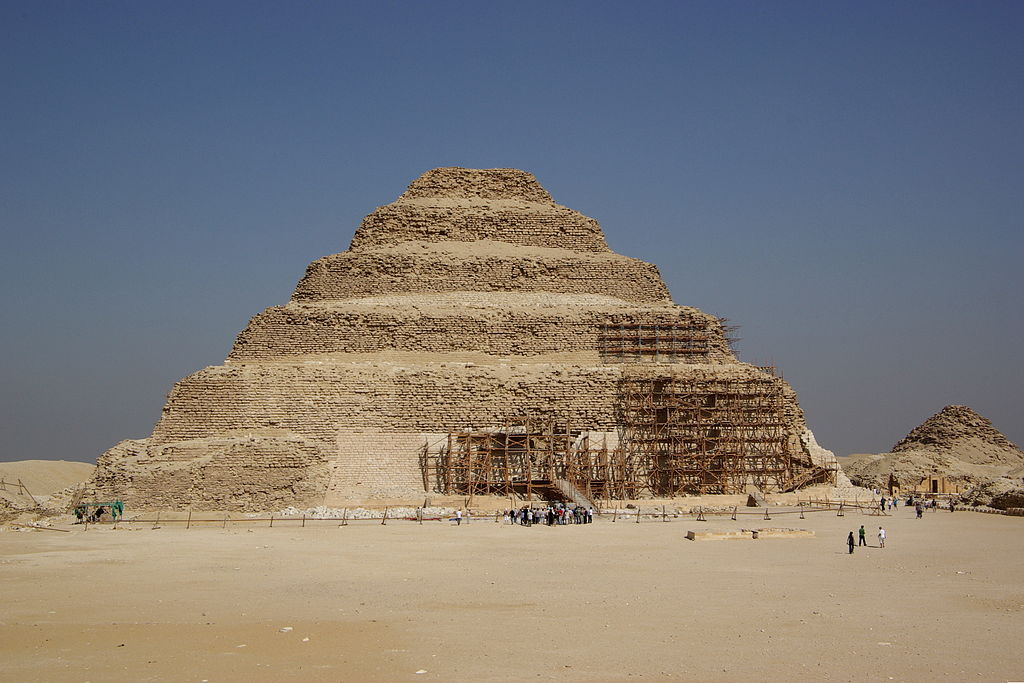
Step pyramid in Sakkara.
This is the first step-type pyramid, called the Djoser pyramid. The construction dates back to around 2670 BC and looks like several stacked mastabas of decreasing size. Most likely, this was exactly the idea of the architect of this pyramid, Imhotep. Imhotep developed a method of masonry from hewn stone. Subsequently, the Egyptians deeply revered the architect of the first pyramid, and even deified him. He was considered the son of the god Ptah, the patron saint of arts and crafts.
The pyramid of Djoser is located in Saqqara, northeast of ancient Memphis, 15 km from Giza. Its height is 62 m.
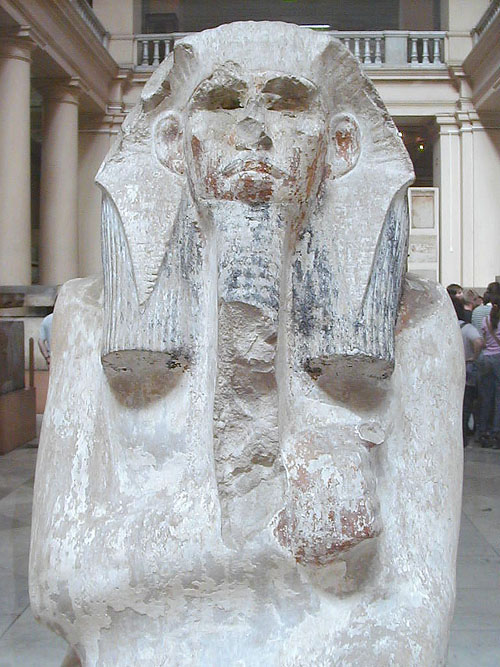
Statue of Djoser at the Cairo Museum
Djoser ("Sacred", Separating) Necherihet (Neherofes at Manetho; ruled ca. 2635-2611 BC) - the first pharaoh of the III dynasty and the era of the Old Kingdom in Egypt; considered the master of the first pyramid.
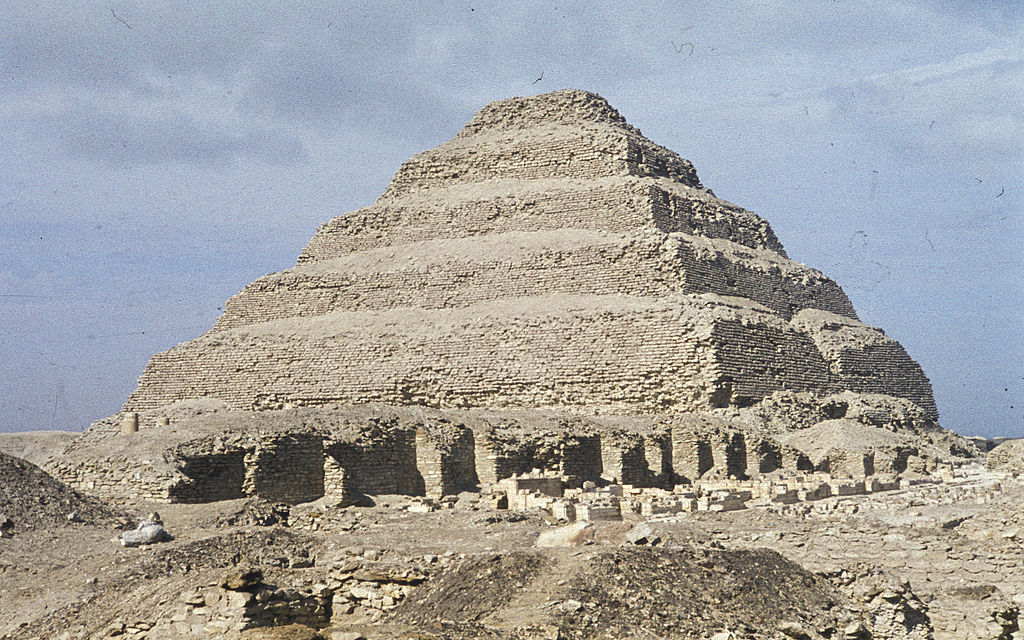
The son of the last Pharaoh of the II dynasty, Hasekhemui and Queen Nimaathep. Under Djoser, the unification of Upper and Lower Egypt into a mighty despotism was completed. Memphis ("White Walls") finally became the capital of the state.
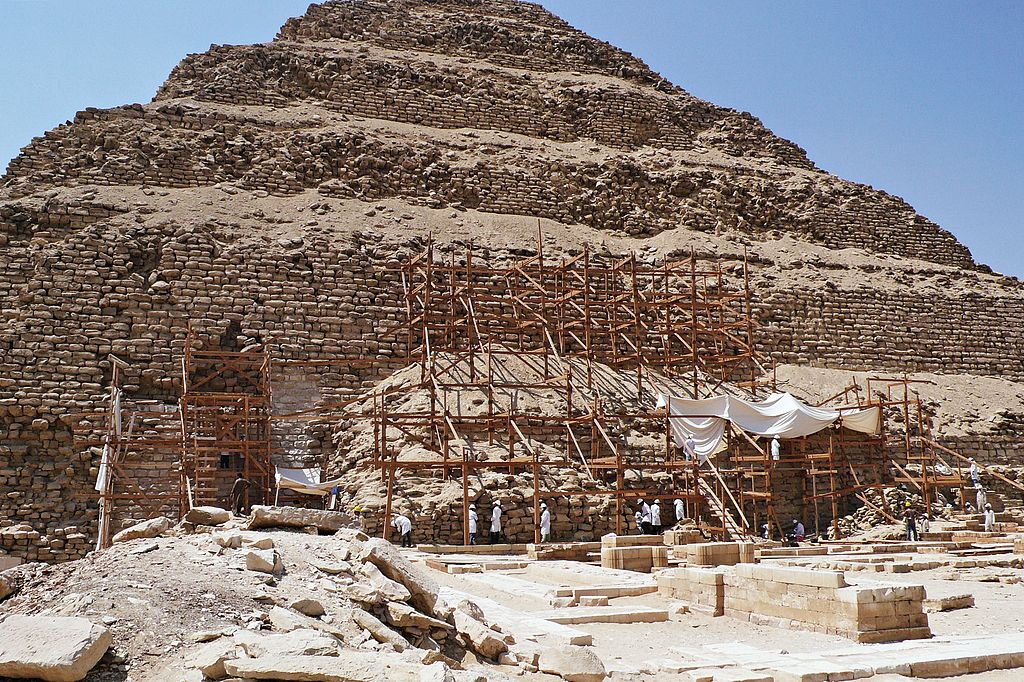
The name Djoser (more correctly Das) in translation from Egyptian means "Sacred". Unfortunately, even this name is a later version, which was not used for a long time after his death and was first encountered only during the XII dynasty. In contemporary inscriptions, Djoser is known under the "choral" name (one of the five official names of the pharaoh) - Khor-Necherihet. It was this name that was inscribed on the monuments built during the reign of Djoser.
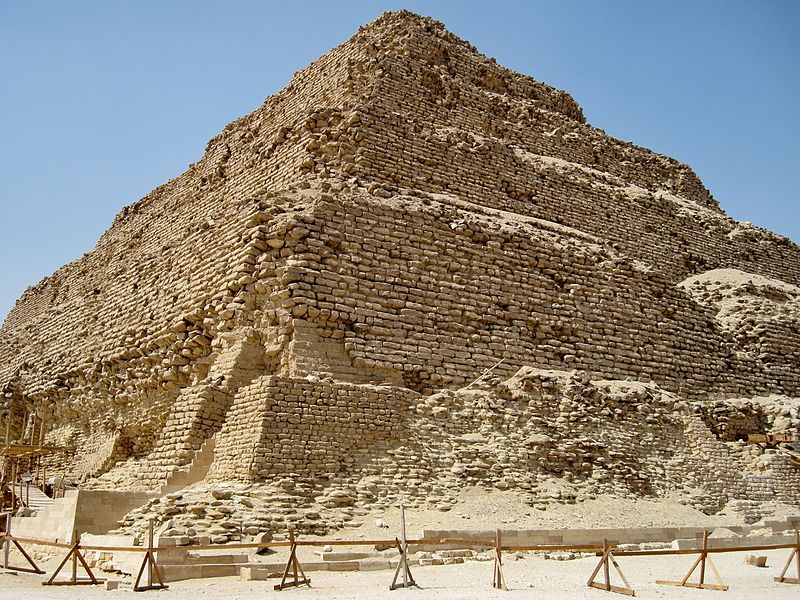
The name Necherihet consists of two words: "Necheri" - Divine and "Chet" (divine group) - Corporation, Union, Collegium. The highest point in the royal regalia and the names of the Choir of kings of the III dynasty are miniature theological treatises about the god Choir, the king and their relationship to each other and to a wider pantheon. In this position are the "echo" of the theological complex of the Pyramid Texts, some of which date from the early dynastic period. From Greek sources it is known as Tosorfros (at Manetho) or Sesorfos (at Eusebius of Caesarea).
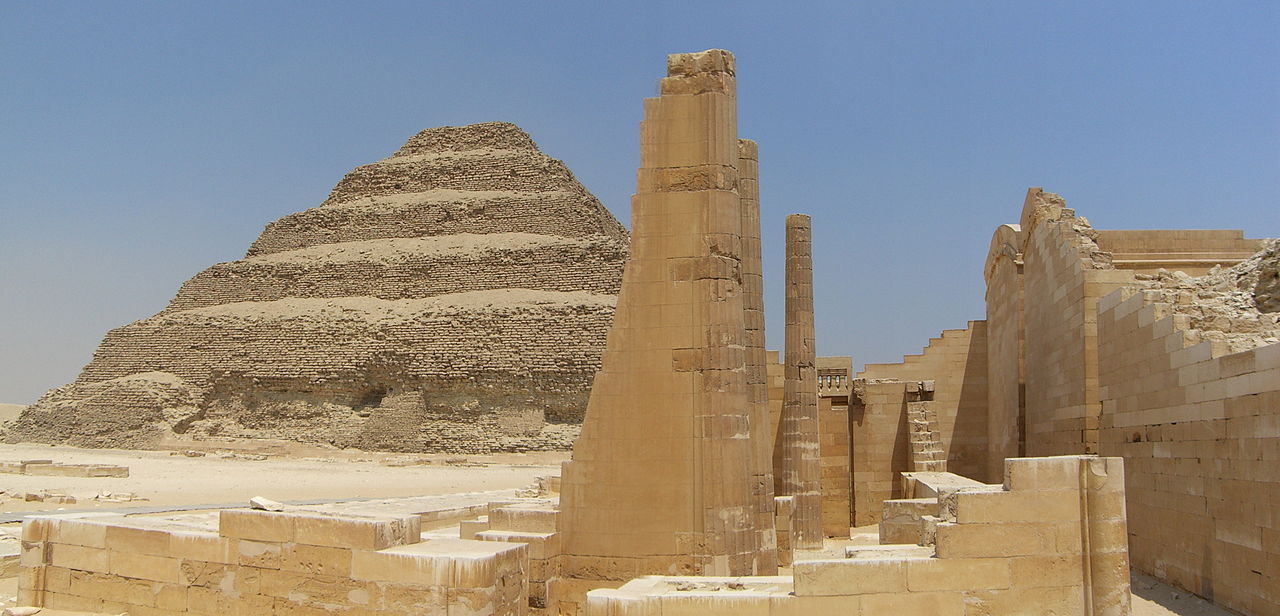
Djoser subjugated the Sinai Peninsula, rich in deposits of turquoise and copper, to the power of Egypt. Bas-reliefs in the Wadi Magkar region tell about the victory of Djoser over the nomads of the Sinai Peninsula and the consolidation of Egyptian rule over the turquoise and copper mines located here.
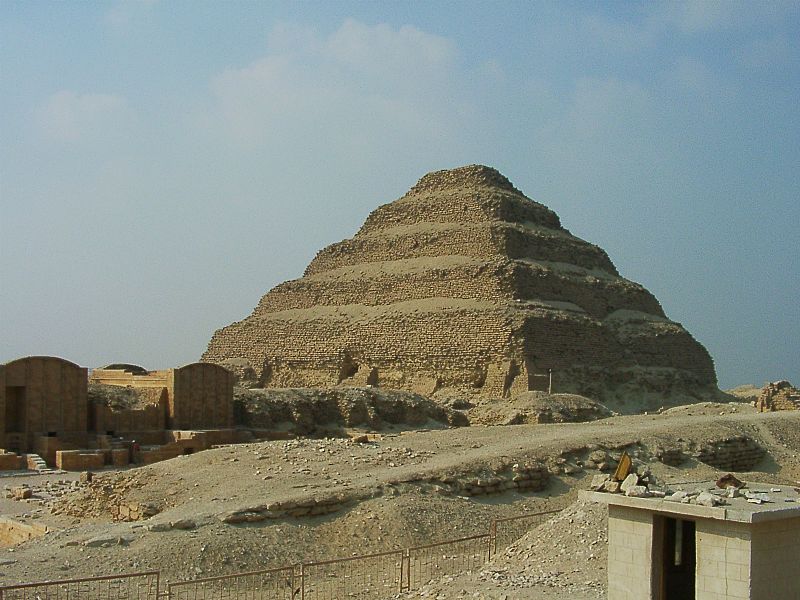
In the south, Djoser subdued part of Northern Nubia, reaching up to Takampso (about 125 km south of the first rapids of the Nile). To protect the southern regions of Egypt in the area of the first Nile threshold, a 12 km line of fortifications was created, which later became the official southern border Egypt.
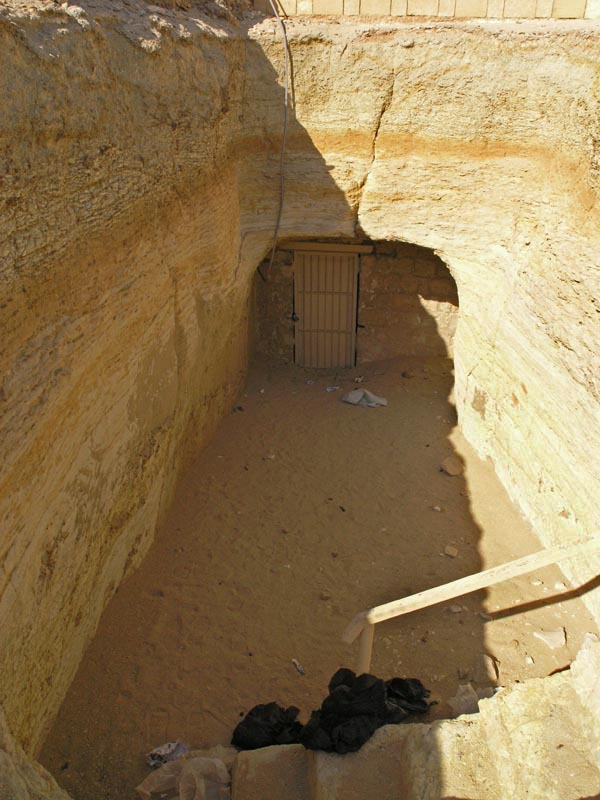
As a result campaigns of conquest the country received a large amount of labor, which was used in the construction, including the most remarkable creation of Djoser - the step pyramid and the complex of the funeral temple with it.
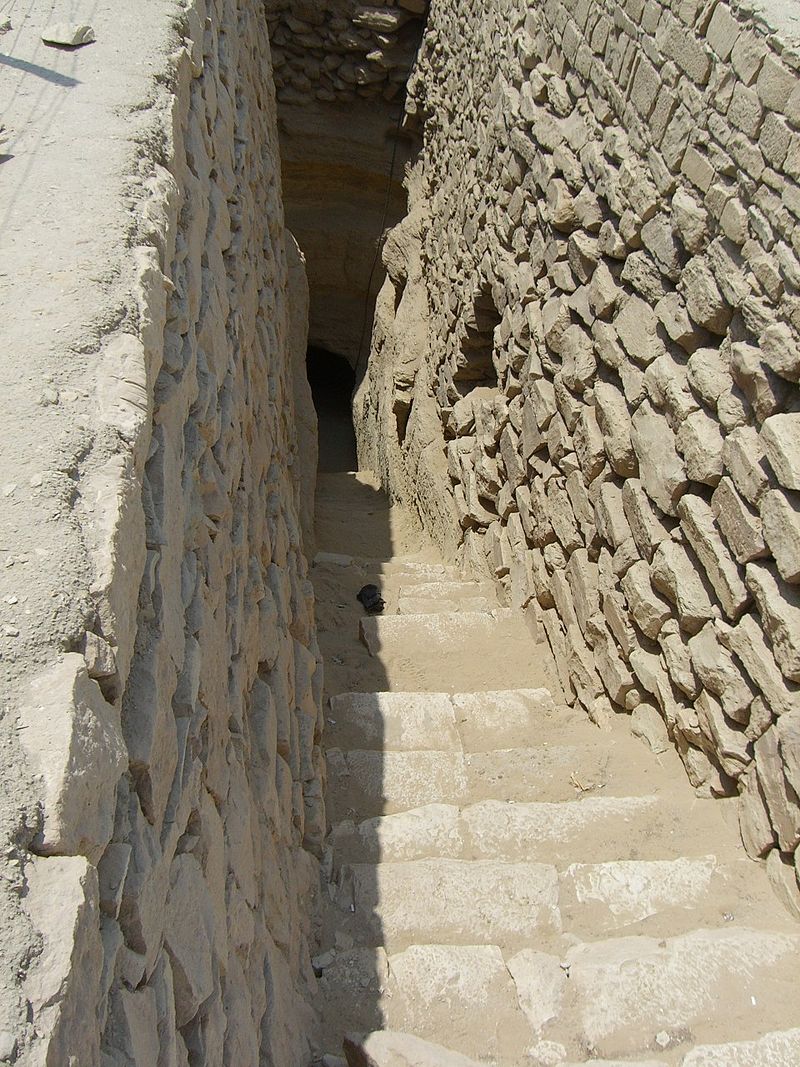
The construction of the Egyptian pyramids dates back to the reign of Djoser. His step pyramid (125 × 115 m and approximately 61 m high) at Saqqara was the first in ancient Egypt.

Until now, the Djoser pyramid has been preserved in good condition, although its dimensions have decreased slightly and are 121 × 109 m, and the height is 59 m.The Djoser Pyramid is considered the world's first stone architectural structure. The styles and shapes found during the construction of this pyramid became a role model for the further development of stone construction not only in Ancient Egypt, but also in other civilized regions of the ancient world.
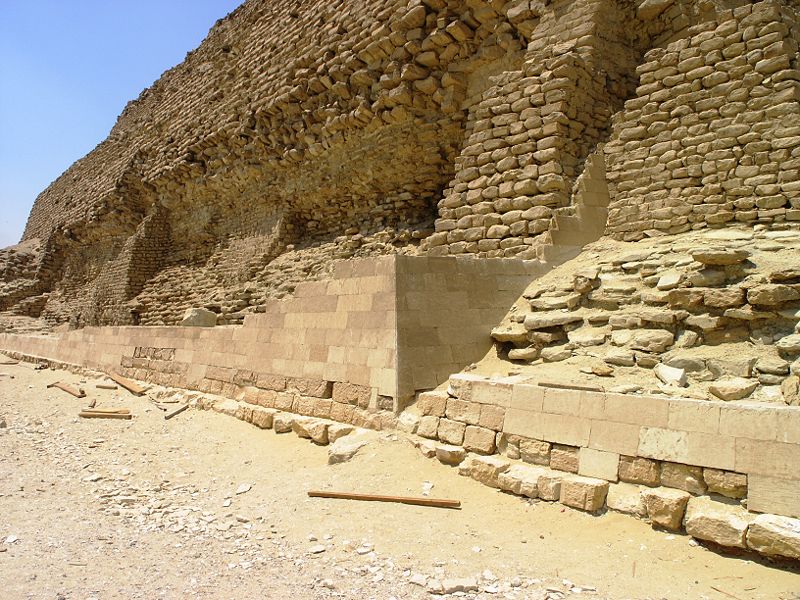
The architect of the pyramid of Djoser, according to ancient Egyptian tradition, is considered the highest dignitary (chati) Djoser Imhotep. In the ancient Egyptian tradition, Imhotep was known as a wise man gifted with many talents - a teacher, doctor, astronomer and priest. His high position at the court of the king is described on the basis of the statue of Djoser, where the titles of Imhotep follow after the titles of the pharaoh: "keeper of the treasury of the king of Lower Egypt, the first after the king in Upper Egypt, manager of the great palace, chief priest of Heliopolis, Imhotep, builder, architect, sculptor of stone vases."
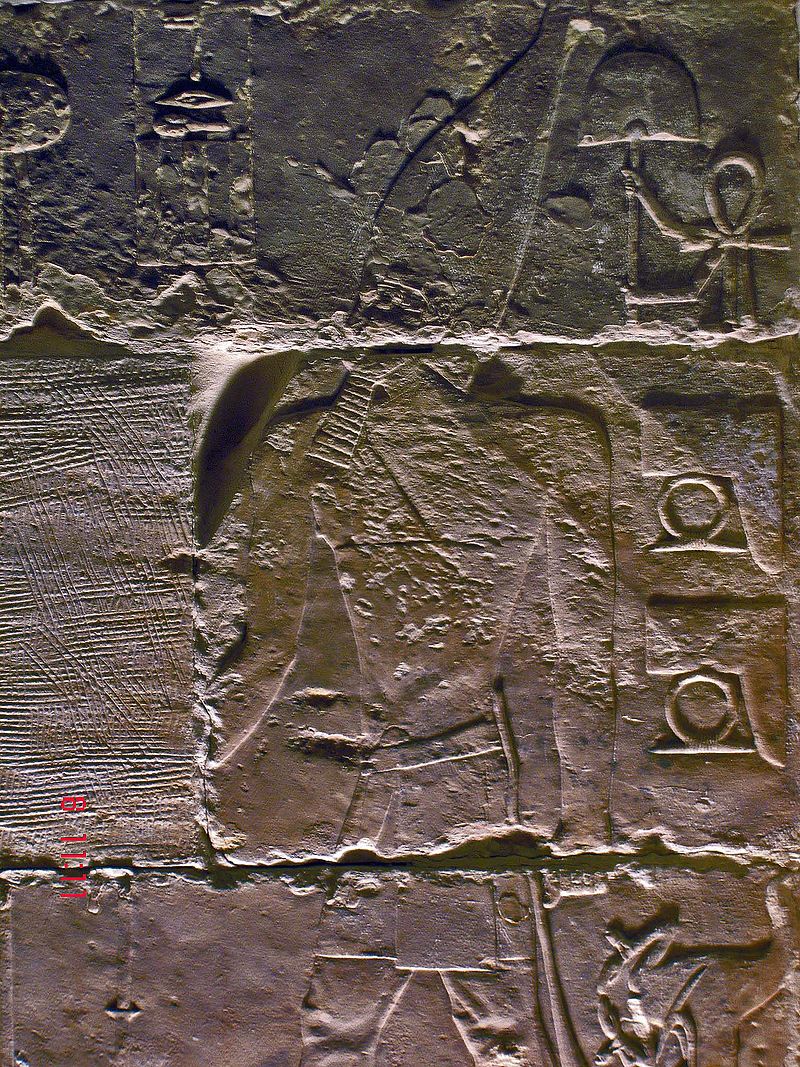
Later Imhotep was deified, and in the Late and Classical period Imhotep was revered as the god of architecture and medicine, and the Greeks associated him with their god of medicine Asclepius. Pilgrims visited Sakkara, where Imhotep was probably supposed to be buried, whose tomb has never been found. In Sakkara, the burials of mummies of ibises have been preserved - a bird that was associated with both Imhotep and Thoth, the god of wisdom, writing and science. Ibis mummies were buried in the thousands in the animal necropolis northeast of the step pyramid complex.
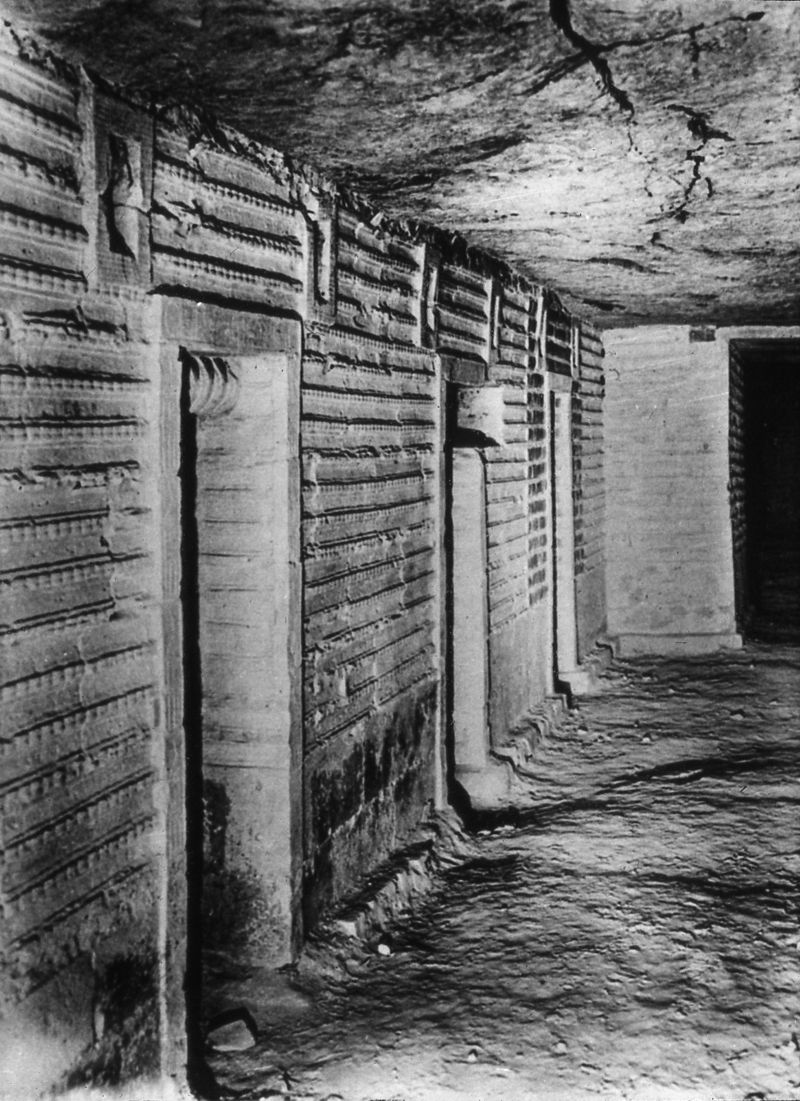
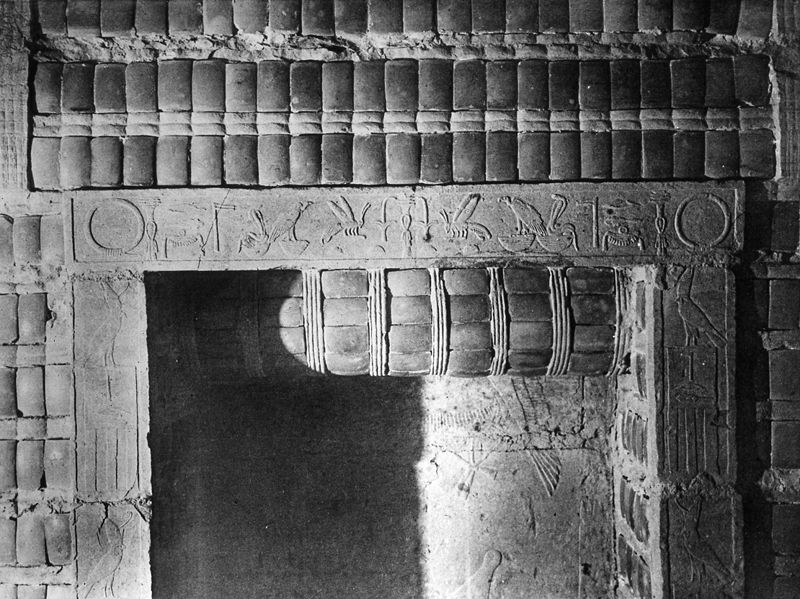

Initially, Imhotep planned to create an ordinary stone mastaba (rectangular tomb; in translation from Arabic - "bench"). Only in the process of construction did it turn into the first step pyramid. The construction took place in six stages, according to the number of steps. It is possible that the core of the tomb from limestone blocks was built for the brother of Djoser Sanakht.
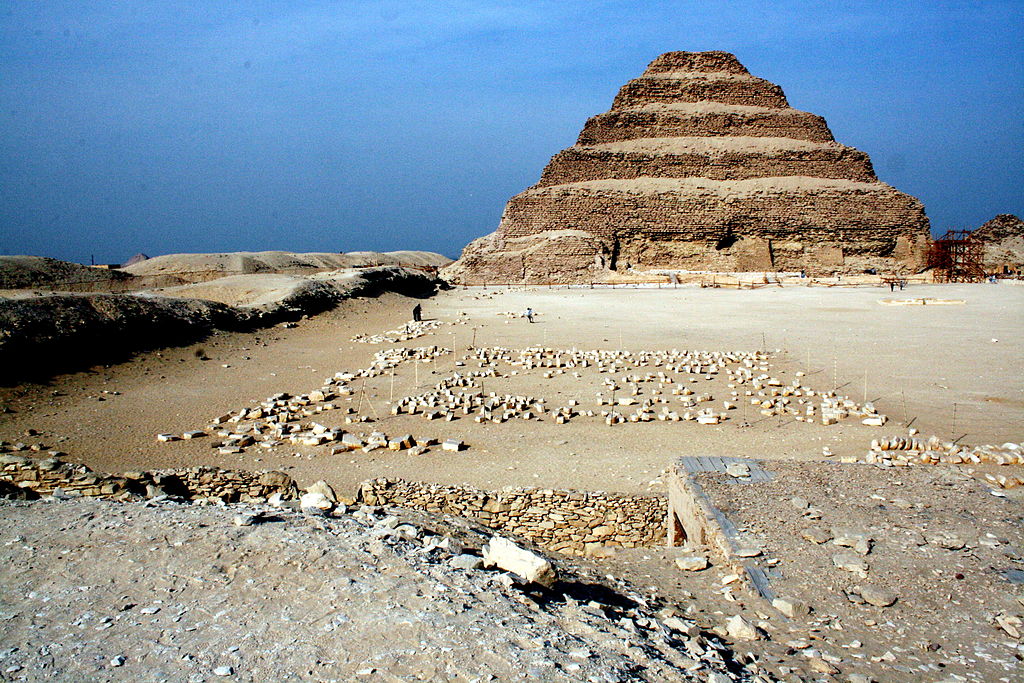
The pyramid of Djoser was intended for the entire family of the deceased, like the early mastabas. In the later pyramids, only one king was buried. In the pyramid of Djoser, 11 burial chambers were prepared for family members in the tunnels of the pyramid. All his wives and children were buried there, including the mummy of a child of about eight years old. The body of Djoser himself was not found (probably only a mummified heel survived from him).
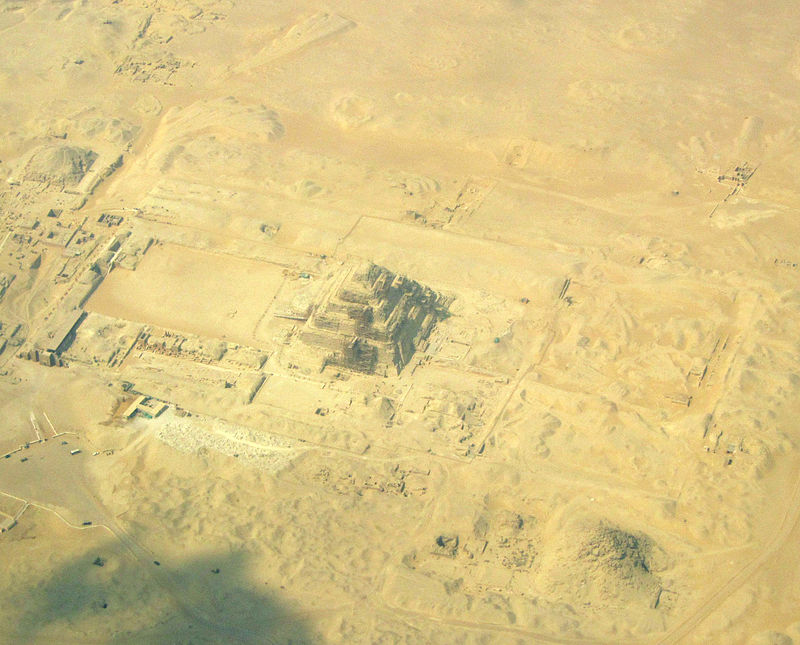
In addition to the pyramid at Saqqara, Djoser also ordered the construction of a symbolic tomb in Bet Hallaf, north of the necropolis in Abydos. The length of this brick mastaba was 100 m, and the height was 10 m. A long staircase led to the basement, divided by partitions into 18 rooms, among which there was a burial chamber made of limestone.
Sekhemkhet pyramid
The pyramid of Pharaoh Sekhemkhet, also known as the buried pyramid, is an unfinished stepped pyramid. Built approx. 2645 BC NS. near Saqqar, southwest of the pyramid of Djoser.
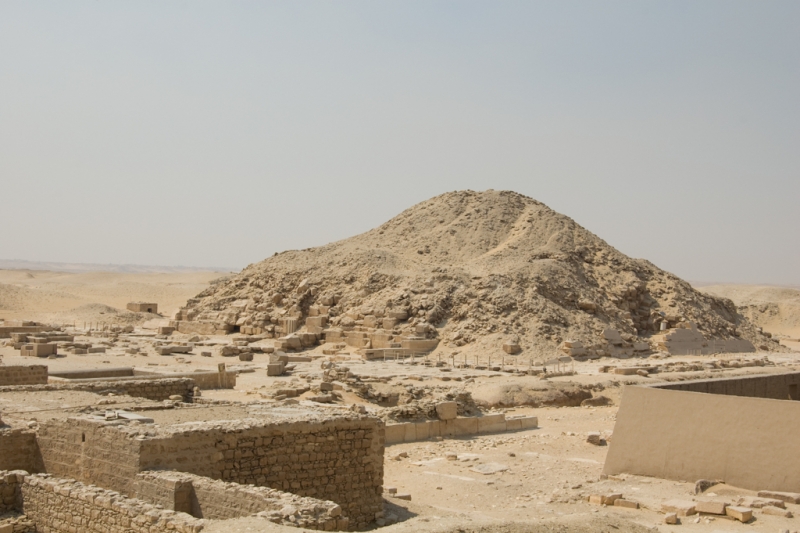
The dimensions of the unfinished wall were 550 x 200 meters. The height of the ruins is about 10 meters, but the dimensions of its square base are 120 meters each. Apparently, the pyramid was built according to a planned project. If the construction had been completed, the height of the monument would have been about 70 meters, which is 10 meters higher than that of the Step Pyramid.
Currently, only the ruins of the pyramid have survived, accessible to tourists, except for the underground rooms.
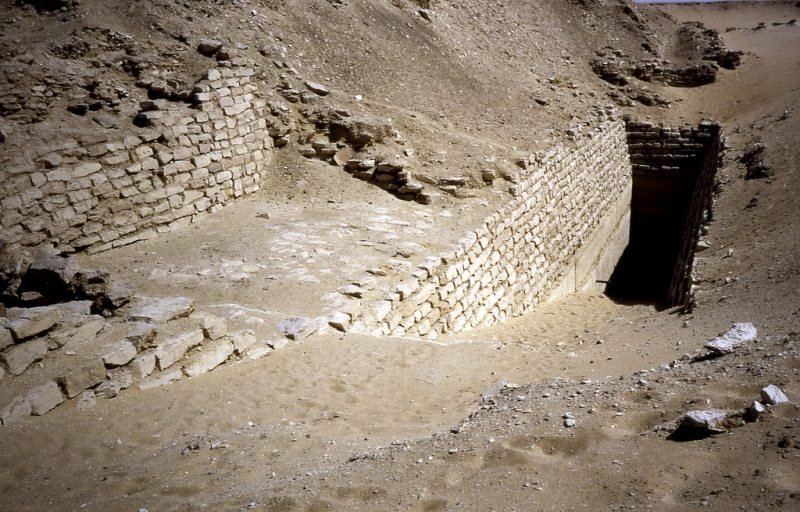
The pyramid of Sekhemkhet was unknown until 1951, when archaeologist Zakaria Goneim noticed a square shape in the desert during excavations. He unearthed a portion of the fence wall that looked like the Step Pyramid complex. The dimensions of the unfinished wall were 550 x 200 meters.

The name of the pharaoh who built the pyramid was unknown until some time. However, many Egyptologists were sure that this was one of the descendants of Djoser, since the structure was located close to his pyramid. In 1954, the building was discovered as an unfinished stepped pyramid. It consisted only of the lower and partly the second steps of the pyramid. The height of the ruins is about 10 meters, but the dimensions of its square base are 120 meters each. Apparently, the pyramid was built according to a planned project. If the construction had been completed, the height of the monument would have been about 70 meters, which is 10 meters higher than that of the Step Pyramid.

During excavations, Goneim found a number of objects: animal bones, papyri and stone vessels from the 3rd dynasty of Ancient Egypt. Gold bracelets and beads were found in one of the wooden boxes decorated with gold.

On May 31, 1954, they managed to penetrate one of the closed walls, where the burial chamber was discovered. Inside the room was an alabaster sarcophagus, carved from a single block with a vertical lid. However, on June 26, 1954, after great difficulties in unlocking and lifting the lid, the sarcophagus was opened and, to the disappointment of everyone, turned out to be empty.
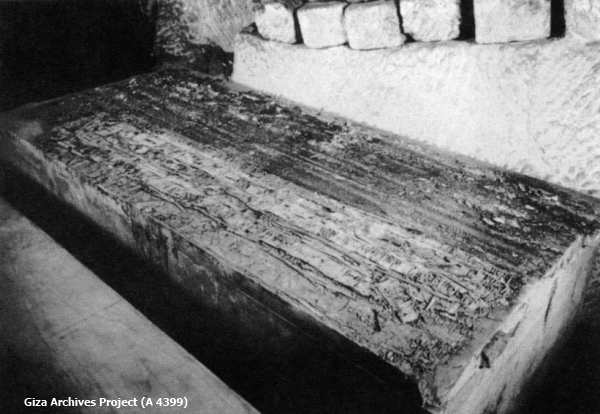
After Goneim's suicide on January 12, 1959, exploration of the ruins was suspended. In 1963, the excavations were resumed again by Jean-Philippe Lauer.
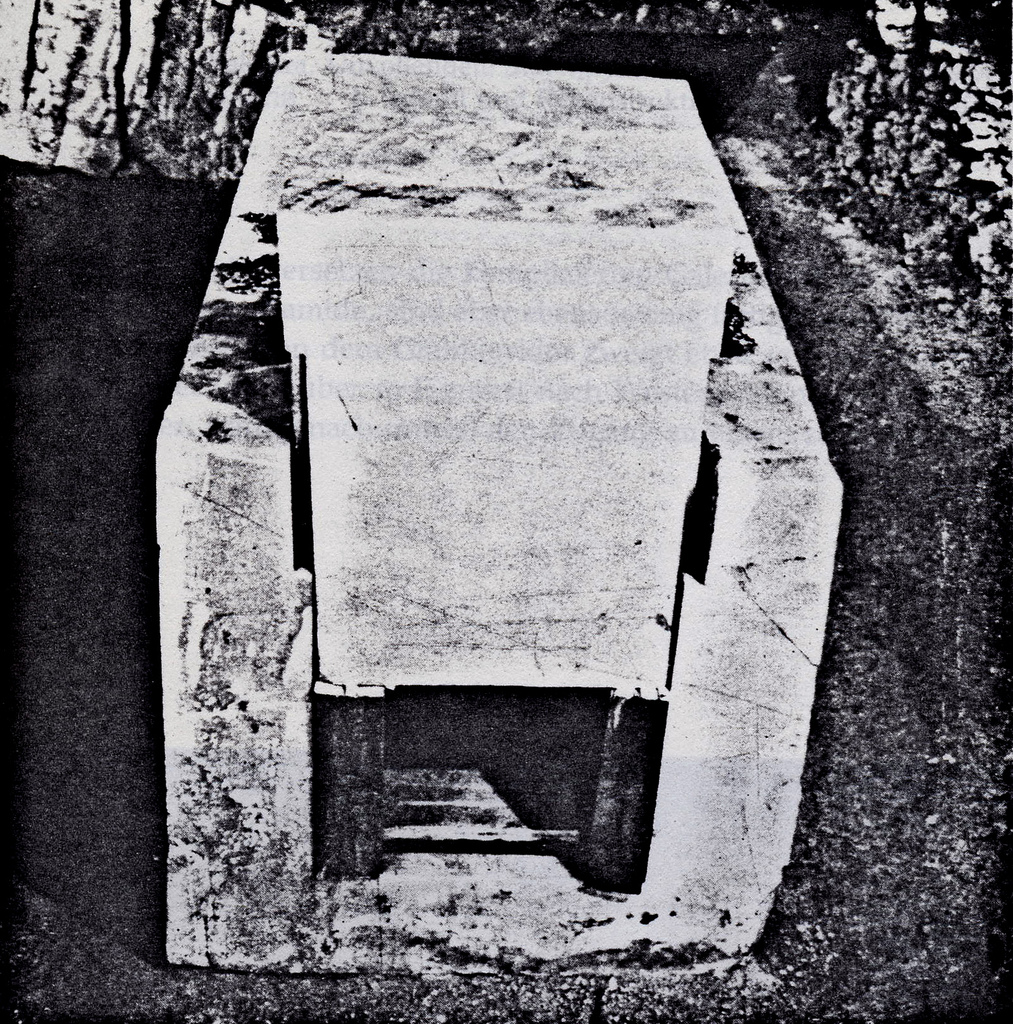
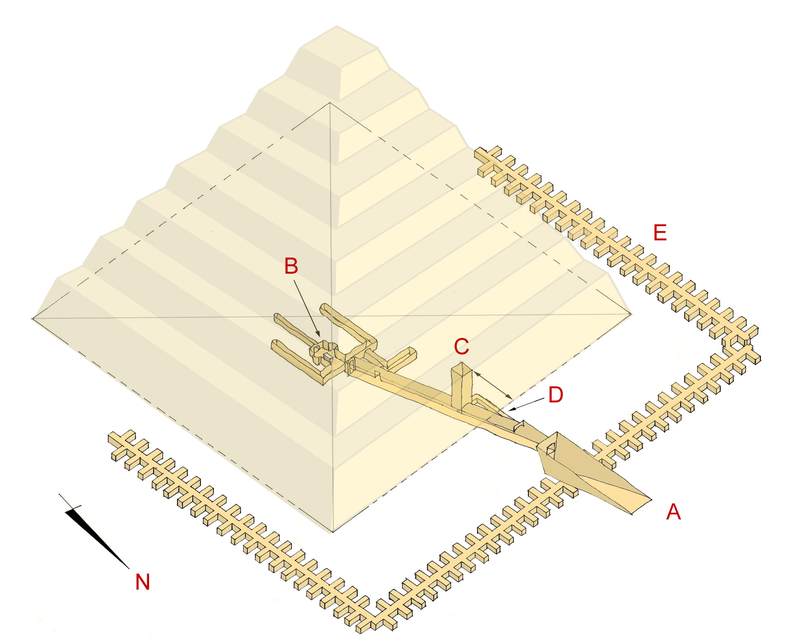
Schematic representation of the pyramid complex
The Sekhemkhet pyramid complex was built southwest of the Djoser pyramid in Sakkara and includes a pyramid, an underground structure, and a necropolis.

On one of the walls surrounding the pyramid, the name of Imhotep was discovered, which makes it possible for his participation in the construction of the pyramid.
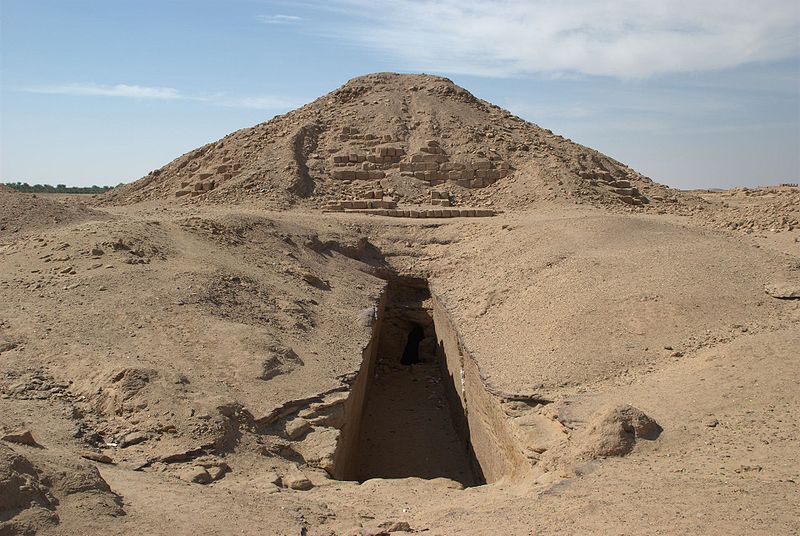
The location of the necropolis is built from north to south, but with an accuracy deviation of about 11 °. Characteristic feature this part of the monument is the inner limestone wall covered with red drawings.
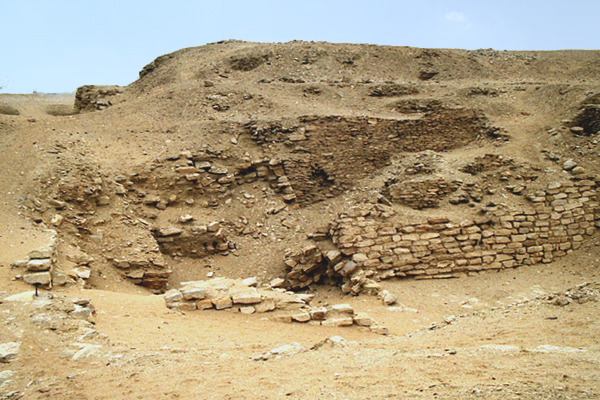
It is not known how many burial chambers and rooms should have been located in the dungeons according to the original plan. In 1963, a southern tomb with dimensions of 32 × 16 meters was found - behind a walled up wall there was a wooden coffin, inside which were the remains of an unidentified two-year-old child. It is quite clear that the child cannot be Pharaoh Sehemkhet, since he is represented as an adult in the drawings from the Wadi Magar mine in Sinai.
To be continued...
Dodson A., Hilton D. The Complete Royal Families of Ancient Egypt.
SWELIM, Nabil, The Dry Moat of the Netjerykhet Complex, in: Pyramid Studies. Essays Edwards, 12-22. (plans, pl.).
Zakaria Goneim: Die verschollene Pyramide. 1955; Neuauflage: Books on Demand, Norderstedt 2006.
Jean-Philippe Lauer: Die Königsgräber von Memphis. Grabungen in Sakkara. Lübbe, Bergisch Gladbach 1988,
Miroslav Verner: Die Pyramiden. Rowohlt, Hamburg 1998, ISBN 3-499-60890-1, S. 165-174 Die Stufenpyramide des Sechemchet.
Mark Lehner: Geheimnis der Pyramiden. Econ, Düsseldorf 1997, ISBN 3-572-01039-X, S. 94-94.
Rainer Stadelmann: Die ägyptischen Pyramiden. Vom Ziegelbau zum Weltwunder. 3. Auflage, von Zabern, Mainz 1997




